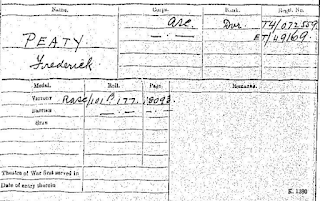There were seven brothers born to John Peaty and Rachel (nee Harris). All seven served in the armed forces during the first world war prompting an article to be published in the Bournemouth Graphic newspaper on 17th September 1915. Below is all the research I have gathered on the brothers lives up to the end of the first world war.
Original article from Bournemouth Graphic newspaper
dated 15th September 1915.
William (Willie) Edward Peaty
William Edward Peaty was born in 1879 in Bournemouth. He is present in the 1881 census, living in Parkstone,
Dorset with his mother and father. In 1891 he is listed as living in Holdenhurst, Hampshire with his mother and
father.
He joined the Royal Navy in 5th December 1895 aged 16 as a bugler and joined the H.M.S Boscowen. He was 5ft
3in and listed as having brown hair, blue eyes and of fair complexion. His job on is service record at the time
of his joining was garden boy.
The H.M.S. Boscowen was the name given to the training ship stationed in portland at the time. During the period of
Williams training this happened to be H.M.S Trafalgar, a 120 gun first rate ship of the line first launched in 1841.
H.M.S Trafalgar (Boscowen)
He formally served in the Royal Navy (service number 185347) between on 8th July, 1895 and was with the Boscowen until 3rd November 1896. During this period he was promoted from boy, 2nd class to boy, 1st class. His conduct is stated as very good.
He joined H.M.S. Victory on 4th November 1896 until 18th January 1897 and his conduct is given as very good.
During this time victory was being used a signal school.
H.M.S. victory in Portsmouth 1884
After victory William was stationed on H.M.S. Excellent the shore establishment based on Whale Island in Portsmouth. During this time it was being used as a gunnery school. He left Excellent on 2nd March 1897.
He then joined H.M.S. Royal Oak, one of seven Royal Sovereign-class pre-dreadnought battleships on 9th March
1897. The Royal Oak departed Portsmouth on 24 March 1897, and arrived at Malta on 5 April as part of the
Mediteranean fleet. On the 8th July 1898 William was promoted to Ordinary seaman. He also remeasured and
has grown to 5ft 5 inches tall. He left the Royal Oak on 30th March 1899 with a character of very good.
He joined the H.M.S Duke of Wellington on 31st March 1899 which was based in Portsmouth and was being used as a
floating barrack and receiving ship. There are many comments about it being a bit of a wreck and being in a
state of major disrepair. William left on 3rd July 1899 and his service record states his reason for discharge
as "Run Portsmouth". This seems to indicate that, aged 20, he left and never came back. The final statement on
his service record states on 26th April 1906, "not to be claimed for further service in the Royal Navy.
Perhaps for this reason I have been unable to find him in the 1901 census.
In 1911, he appears in the census living at1 Lime Cottages Bourne Valley Road Branksome Bournemouth, Poole, Dorset
with his wife (Emily) Louisa, his daughter Ellen (a school pupil) presumably named after his sister, his son William
(school pupil) presumably named after himself, his daughter Florence and David Langley who is listed as an unemployed
coal porter. William is working as a coal porter carter.
He married his wife Emily Louisa Short in the summer of 1914.
In February 1915, aged 35, he joined the 3rd Battalion the Dorset Regiment as a private. He died in Poole
hospital of pneumonia on the 13th October 1915. He had been in camp when taken ill with pleurisy and pneumonia.
He lived at 5 Gwynne Road, Branksome with his wife and four children. He had featured in the above newspaper article
weeks previously. Following a funeral procession that included the Mayor of Poole, he was buried in Branksome
Cemetery on the afternoon of the 15th October.
(Arthur) Joseph Peaty
Joseph was born in 1881 in Bournemouth. His birth was registered in the last quarter of 1880 with his name
being registered as Arthur Joseph Peaty. However, all further records appear as Joesph Peaty. He appears
in the 1881 census living with his parents and older brother at Bourne Road, Parkstone, Poole, Dorset. He
then appears in the 1891 census living at Terrace Road, Holdenhurst, Christchurch, Hampshire with his parents and
siblings.
On 9th February 1898 he signed attestation papers to join the Royal artillery although on the papers it looks like
Royal Dragoons of the line has been crossed through and replaced with Royal Artillery. The attestation papers
state he was 18 years and 2 months and working as a porter whilst living in Bournemouth. He signed the
attestation paper in Winchester and was given a service number of 26108.
He is noted as being 5ft 91/2 inches tall and 125lbs. He has a 33 inch chest, a peach complexion with blue
eyes and brown hair. He has a scar on the inner side of his left wrist and a mark on the back of his hand but is
marked as 'fit'. He religion is stated as presbyterian.
He is first posted on 14th April 1898 to depot 15 as a gunner. On 8th August there is a note which I believe
states:
"Elects R.W. of 31 for missing allowance".
On 1st February 1899 he was posted to India with 11th Battalion as a gunner where he would spend the next 5
years. On 16th Februrary 1901 he his granted G.C. pay at 1d. On 10th June 1901 he forfeited G.C. pay. On
13th October 1901 he was posted to 6th battalion before moving to the 51st Battalion Royal Garrison Artillery on 1st
January 1902.
On 26th February 1904 he was posted to Aden in Yemen, presumably with the 51st Battalion.
On 24th June 1905 he elected to extend his service to 8 years with the colours. On 13th may 1905 he elects
R.W. as G.C. as 1902 and is granted class 1 S.P. at 6d. On 23rd July he is restored 1 G.C. badge. On 1st August
he is granted class 1 S.P. at 7d.
On 16th December 1905 he is posted to 3 depot and left Aden on 2nd January 1906 returning home on 3rd January
1906. On returning home he was placed in reserve on 7th February for another 4 years before being discharged
from service on 7th February 1910. In total he spent 12 years in service and left with 8years in pension
payments.
In 1911, a Joesph Peaty appears as a house porter at Clifton Hall, Cliff Cottage Road, Bournemouth.
He married Hilda Osment in 1913 in Christchurch.
During the first world war Joseph enlisted for the Royal Army Medical Core as a private and then later joined the
Royal Garrison Artillery.
They had a son, Reginald, born in 1915 and a daughter Barbara born in 1919.
He passed away in 1961.
John Walter (Jack) Peaty
John Walter (Jack) Peaty was born on 8th May 1882 in
Bournemouth, Dorset. He was the third son of John Peaty and Rachel Harris.
In 1899, aged 16 he joined the Royal Navy. He is
described as being 5ft 4 inches tall with light brown hair, grey eyes and having a fair complexion. He joined
the training ship H.M.S st Vincent, morred at Haslar, in June 1899 as a boy 2nd class. He then joined the
training ship H.M.S Boscowan, like his elder brother, in July 1899 and was promoted to boy 1st class in October 1899.
In February 1900 he joined H.M.S Minotaur and was promoted
to ordinary seaman in May 1900. At the end of May he joied the H.M.S. Duke of Wellington before moving to H.M.S.
Alexandra, a coastguard ship in Portsmouth. He then joined H.M.S. Resolution in July 1900 until Ocotber 1900.
During this time he appears in the 1901 census on board H.M.S Resolution which is anchored off the coast of
Gibraltar. At 18 his height is remeaured and recorded at 5ft 3/4.
On 10th October 1900 he joined H.M.S. Formidable where he
spent the next two years before moving to H.M.S. Bruiser, an ardent class destroyer on 3rd November 1902.
He then rejoined H.M.S. Formidable on 4th January 1903 and was promoted to able seaman in May 1903. He then
leaves formidable on 30th September 1903 (possible for shore leave?) before joining H.M.S. Vivid, a shore based
establishment based in Davenport on 1st October 1904. Throughout his Royal navy career to this date his
character has been rated as Very good. During his stay at H.M.S. Vivid his conduct is downgraded to fair and his
record states he was on the run for 42 days from 12th November 1904. He stays at H.M.S. Vivid until 15th march
1905.
He joins H.M.S. Russell, a duncan class battleship, on
16th March 1905 until 5th May 1905. During his spell on Russell he spent 5 days in cells but, conversly his conduct is
stated as very good.
On 21st April 1906 he joined, what looks like, H.M.S Wave
until leaving on 9th July.
On 10th July 1906 he joins H.M.S. Implacable, a formidable
class battelship. He stays with Formidable for the next two years before leaving in May 1908.
He returns to H.M.S. Vivid on 30th May 1908 and stays
until March 1909.
In April 1909 he joins H.M.S. Lois (sp?) until October
1910.
On 4th October 1910 he returns to H.M.S. Vivid for a week
before joining H.M.S. Majestic, a majestic class battleship, until 4th September 1911. He then joins the H.M.S.
Cumberland, a monmouth class armoured cruiser, on 5th September 1911 until 12th January 1912.
On 13th January 1912 he joined H.M.S Lundy (sp?) for two
weeks before joining H.M.S. Inctus (sp?) on 24th January until completing his service on 4th May 1912.
He married Emil Hofflinstan Warren in 1914.
On 1st September 1914 he enlisted as a private in the 5th service battalion of the Dorsetshire regiment. The battalion trained at Belton Park, Grantham and shortly after at Witley Camp near Hindhead before joining the 11th Northern division. The battalion along with other battalions formed the 34th infrantry brigade. The 11th Northern division formed part of the mediteranean expeditionary force and on 1st July 1915 John left England via Liverpool on HMS Aquitania. The battalion sailed to Lemnos and Imbros before finally reaching Suvla bay on 7th August 1915 which formed part of the Gallipoli peninsular.
The 34th brigades initial orders to support the 30th brigade along the north coast of Suvla bay were hampered due to major shortages of food and water which would be a common problem during their time on the peninsula. On 9th August the battalion came under heavy fire during an attack north east of hill 28 and by the time they were relieved the next day they had lost 60 men injured and 20 men killed.
On 13th August the brigade moved to trenches near Green hill and on 20th August the Turkish raised white flags requesting a meeting. A truce was agreed in order to clear the dead bodies in no mans land. The following morning the truce was broken with the Dorsets forming the front line of an attack. They managed to take the first Turkish trench but were then subject to heavy enemy fire and took heavy casualties.
On 21st August the battalion attacked again but suffered a large number of casualties among the officer ranks and by the 22nd August the battalion had been reduced to 250 men. The dorsets were joined to other battalions to bolster numbers and were sent to hold trenches further down the line.
On 20th September the brigade were finally relieved after 35 men had been wounded by sniper fire and 25 men killed. The brigade were moved to reserve until 28th September when they returned to trenches. By this time sickness left the battalion short of men with dysentry having a major impact on the men. They remained in trenches until 16th October where they were somewhat successful at locating and neutralising Turkish sniper posts. After they were finally relieved, major storms during November caused growing number of the men to suffer dysentry, damage equipment and deplete resources even further. By early December circa 150 men had been evacuated to hospital in Alexandria. By mid December only 17 officers remained.
On 16th December the the battalion began their evacuation of the peninsular and arrived in Mudros to stock up on fresh food and water. On 19th December they arrived in Imbros where they remained for a month to recover before being redeployed to Egypt in late January 1916. They remained in El Ferdan on the Suez canal for 6 months before arriving in Marseille, France on HMT Transylvania on 9th July 1916 to start their service on the Western front.
On arrival in France they were transported by rail to the Arras front and were in trenches 3 miles south of Arras on 1st August. During the early part of August they are hounded by gas alarms, smoke bombs and small mortar fire from rifle grenades. They continue to patrol and in one instance discover an empty German trench filled with 100s of crows feet scattered around. An unexploded mortar round is fired at during a patrol causing it to explode, damaging the enemy trench and accidently killing a lewis gunner.
They contine to take small numbers of casualties throughout early August moving to Riviere on the 9th August and then marching to Sombrin on the 21st August. They are moved to Magincourt Sur Canche on 30th August. During August they are joined by new officers and men and are at an effective strength of 43 officer and 861 other ranks by the beginning of September.
On 3rd September they move by train to Puchevillers and march to Bouzincourt on the 8th September. They continue to train before relieving the 2nd Canadian mounted rifles on 16th September in trenches opposite Mouquet farm. On the first day in the front line the battalion loses a an officer wounder, 6 men killed and 16 wounded. The battalion diary notes the the position was found not to be as thought, Mouquet farm was only half taken, not altogether as thought by the Canadians. They found lines being held in the farm and 2 buildings to be strongholds for German snipers. The proposed relief of the battalion was abandoned due to the poor conditions of the trenches. By the second day a further officer had been wounded, 3 more officers were relieved due to shell shock, 2 men killed, 7 wounded and 1 missing. On the 19th their relief by the 11th Manchesters began but not before losing 4 men and 14 wounded.
On the 20th they were fully relieved and back in billets in Albert Englebelmer. They had 5 days to recover before moving up to Ovillers Trenches on the 25th September.
On 26th September they were ordered to attack the German positions on Mouquet farm. The 9th Hampshires and 8th Northumberlands were to lead the attack with the 5th Dorsets in support and 11th Manchesters in reserve. At 10:45 they took up positions in the support trenches. The attack started at 12:35pm with the Dorsets following the front line by around 500yds. The battalion started off well but suffered heavily from enemy barrage before reaching the 1st objective. They also suffered heavily from bombs, machine guns and snipers from Germans still occupying Moquet farm. They struggled to get messages of progress back to the commanding officers as all company commanders and company seargent majors were "knocked out" early in the advance. Casualties amongst the N.C.O.s was heavy.
By 8pm telephone messages from the commanding officer of 34th brigade to the commading officer of the battalion demanded that the battalion HQ be moved up to collect the battalion and consolidate the 2nd objective. However, an initial attempt to move the HQ up to the quarry was prevented by heavy machine gun fire and German sniper fire from Mouquet farm.
At 10:30 pm another attempt to move the HQ up to the battalion encountered heavy barage on the way to the quarry. Battalion HQ carried water up to the front for the men, having to wait in the quarry for the barrage to abate, before reaching High trench where they found the Manchesters in the communication trenches. They found East Yorks working on High trench and royal engineers working on communications trench forward. HQ pushed on to ?R2yd5q?. They picked up 2 officers and about 50 men along the way.
By 2am on the 27th September the enemy were sending up a lot of flares 100yds in front of the HQ. It was decided to consolidate T Trench and then send out a bombing party but no bombs were available, instead sending out a party to recconietre but they were driven back by machine gun fire. At 6:30am the Manchesters moved up to Schwaben Trench with the remaining Dorsets moving up to Zoller Redoubt. The consoilidated the position and set up battalion HQ at a point NE ?R2yg17?. An attempt was made to move to Stuff Redoubt by an officer and about 20 men but they were forced to withdraw due to heavy machine gun and sniper fire. At 10:00am the enemy shelling became heavy and continued throughout the day. The enemy were also active with snipers and machine gun fire making it very difficult to move up ammunition, bombs and rations. At 13:30pm they received orders to attack Hessian Trench with Manchesters attacking Stuff redoubt on their left. However, the order was quickly cancelled and so further consilidation of the current position continued.
The dorsets were relived during the afternoon of the 28th September. During the attack the Dorsets had lost 5 officers killed, 5 wounded and 3 missing. Estimated casualties of other ranks was 410. During the 29th September two officers and around 40 men were ordered to search the farm for bodies and bring in the wounded. The battalions effective strength at the beginning of October was 30 officers and 593 other ranks (100 men were drafted in to the battalion as replacements).
At some point on 27th September 1916 John was admitted to hospital (index
of admission T9678). The entry is filled with roman numerals IV.1, - Gunshot wound of chest. Simple flesh
contusion or wound. He was sent to No, 21 ambulance train. (ref MH106/324 MH106/324 can be found at The
National Archives in Kew, and contains First World War Representative Medical Records of Servicemen from No. 3
Casualty Clearing Station).
On 2nd November 1916 he is listed as "wounded" on the
casualty list issued by the war office.
He was promoted to sergeant whilst with the 5th (service) Dorsetshire battalion, 11th division.
He then joined the Somerset light infantry as a sergeant
before being discharged on the 15th January 1919.
In 1925, 1926,1927,1929 he is shown in the electoral roll
in St Pauls Road, St Pancras, London. Emilhofflinstan Peaty is shown at the same address.
He appears in the 1939 register, living at 3 Edbrooke
Road, Maida Vale, City Of Westminster, Paddington, London with his wife Emily. His occupation is stated as a messenger
for a shipping agent.
His wife Emily died in 1946 aged 63.
Frederick Peaty
Frederick Peaty was born in 30th April 1885. He appears in the 1891 census living with his parents and older
brothers at Terrace Road, Holdenhurst, Christchurch.
He appears in the 1901 census, aged 16, living with his parents at 11, Mannington Place, Bournemouth, working
as a Groom (not domestic).
In 1906 he married Agnes Clanfield in Poole.
In the 1911 census he appears living with his wife Agnes and their two children, a son Leslie, born in 1908 and a
daughter Agnes Maud, born in 1911. They live at 7 Branksome Cottages Archway Road Parkstone, Poole,
Dorset. His occupation is given as Hay corn and coal merchants labourer.
During the first world war he enlisted as a driver in the Army Service Corps. His cap badge is owned by Poole museum.
In 1939 he appears with his wife Agnes and possibly his niece Barbara (daughter of Joseph? Born 31st July 1922)
living at 11 Jubilee Road, Poole, Poole M.B., Dorset. His occupation is given as a carter at a pottery
works.
Henry Victor Peaty
Henry was born on 5th June1887 in Christchurch, Dorset.
He appears on the 1891 census living with his parents, elder sister and brothers at Terrace Road, Holdenhurst,
Christchurch, Hampshire.
In the 1901 census he appears, living with his parents and brothers, aged 13, at 11, Mannington Place,
Bournemouth and has a listed occupation of errand boy.
On 31st March 1907 he married Florence Rose Horlock, daughter of William Horlock, in Heatherlands, Dorset.
In the 1911 census he appears with his wife Rose, daughters Nellie (8) and Violet (3) and two sons, John (2) and
William (0). They are recorded living at Victoria Crescent, Parkstone, Poole and Henrys occupation is given
as Carter general.
Rose and Henry went on to have the following children Florence A (1912), Thomas R (1915), Mary T.L. (1918), Agnes C
(1920), Edna M (1921), Joesph R (1923) and Patricia M (1928).
He appears in the 1915 electoral register at Victoria Crescent.
During the fist world war he enlisted with the Royal Engineers (50356), 17th Signal Company as a sapper and later
promoted to lance corporal. He entered the european theatre on 13th April 1915. On 19th December 1915 his name is recorded in the company war diary as being injured whilst repairing lines near Reningelst, Belgium and "struck off strength".
On 4th January 1916 he was
listed as wounded on the Casualty List issued by the War Office (ref DT14011916). On 11th January 1917 he was
discharged and transferred to class P army reserve. He was issued with his partuclars on 30th June 1917 and
badges and certificates on 27th July 1917 in Chatham. He was awarded a pension of A.46 d/ 06/06/1917 Pension
6/3 for 39 weeks conditional. (ref War office number R.E. 791).
In 1939 he appears in the 1939 register living at 26 King Street, Yeovil, Somerset. He is listed with an
occupation of telecommunication foreman, PO engineering department, Skilled Workman C. He is listed along with
his wife Rose, an unpaid domestic (housewife) and daughters, Mary T L Rexin (Trevett, Peaty), born 5th March 1918, a
packer in a laundry, Agnes C Brown (Peaty), born 28th January 1920, a gloving machinist, Edna Chislett (Peaty), born
26th May 1921, a packer in a laundry and finally, Patricia M Ramsey (Peaty), born 19th May 1928, a school pupil.
There is also another record on the register crossed through.
Daughters of Henry, left to right, Peggy, Patricia,
Edna?, Violet, Mary and Florence
Henrys son Joesph during WW2
Rose and Henry Victor Peaty
Henry passed away at the age of 65 in 1952.
Reginald Peaty
Reginald was born on 5th January 1890, in Christchurch.
He appears in the 1891 census aged 1 living with his parents and older siblings at Terrace Road, Holdenhurst,
Christchurch.
He appears in the 1901 census aged 11 living with his parents at 11, Mannington Place, Bournemouth,
Christchurch.
On 1st December 1914 he was listed as "wounded" in the casualty list issued by the war office. (ref DT16011915)
From the Poole museum society blog post -A letter sent from
R. Peaty to his brother and sister
I got my wound when we charged the Turks' trenches. A Turk made a lunge at me with his bayonet and I caught hold of
his bayonet with my hand and the point of it went nearly through the centre of my hand. But I put him to sleep
with the butt of my rifle; he will never wake up any more.'
‘We drove the Turks miles away, and captured their supply of food and ammunition. We also took twelve camels. We then
advanced on Basra and took that. It is a big place. About nine days afterwards the Turks surrendered to us about
forty miles away from Basra, and my chum got killed when we were advancing on the Turks. A shell burst by the side
of me, and I looked round to speak to my chum, and found that the shell had caught him and two more chaps and had
killed the three of them. Just afterwards my drum-major came alongside of me and said, ‘It isn’t half raining is
it?’ He meant the bullets. He never spoke any more, a bullet had gone straight in the centre of his head. I was
sorry for him, because he was married and had two children, and he was a good man at his work. We have had a lot of
men die of their wounds since.
The drum major he mentions in the letter I believe could be Sergeant Joseph Charles Hoskins from Bridport who was killed in action on 17th November 1914. He married Agnes Rose Carver in 1909 in Bombay. He was listed as a musician in 1911.
On 23rd June 1916 Reginald was listed as "captured at Kut" in the casualty list issued by the war office (ref
DT24061916).
On 25 March 1917, he appears in a list of soldiers reported missing after action.
On 9th August 1917 there are reports received from various sources that having been reported previously missing,
was now reported to be a prisoner of war in Turkish hands. (ref NLS 1917_WList02).
On 28th September he appears in a list of soldiers now found and reported as prisoners of war, interred at
Jerueslem (sp?).
On 20th December 1918 he is reported as "Released prisoner of War from Turkey". (ref War Office Daily List
No.5753, NLS
1918_WList073).
I've been unable to find any more information following his release, however, the service record of L.Cpl John
Snell who was reported missing on the same day and later found as a prisoner of war in Jerusalem was repatriated at
Jasmnect(sp?) camp on 9th December 1918 and disembarked Port Said 9th December 1918 and immediately admitted to
Kantara hospital (El Qantara, Egypt) suffering from Malaria.
He married Annie W I Smith in Poole in 1920.
In 1923 they had a daughter named Barbara.
He appears on the 1931 register living at Fernside Villa in Dorset.
He appears with his wife on the 1939 register at 99 Layton Road, Poole. His occupation is given as Concrete
Tube Maker Heavy Worker.
He passed away in 1981.


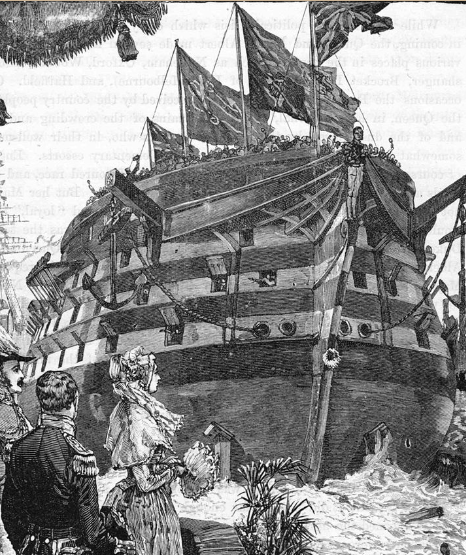
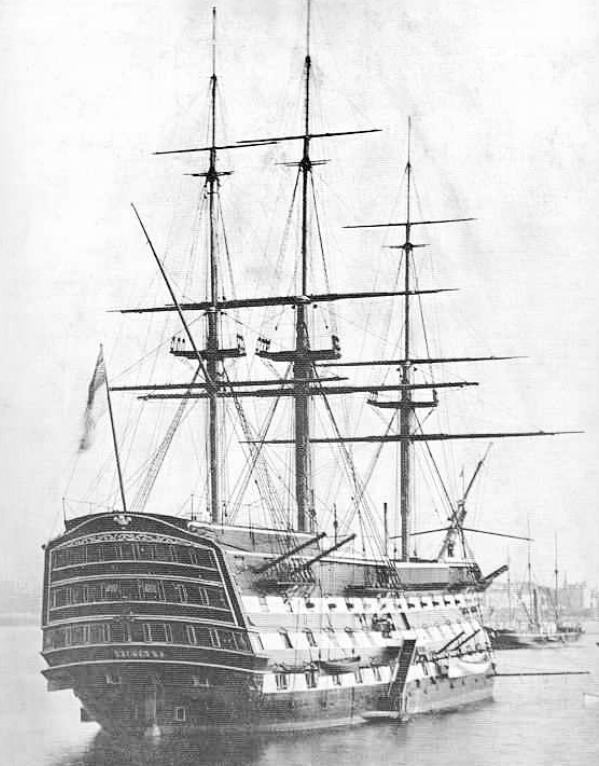



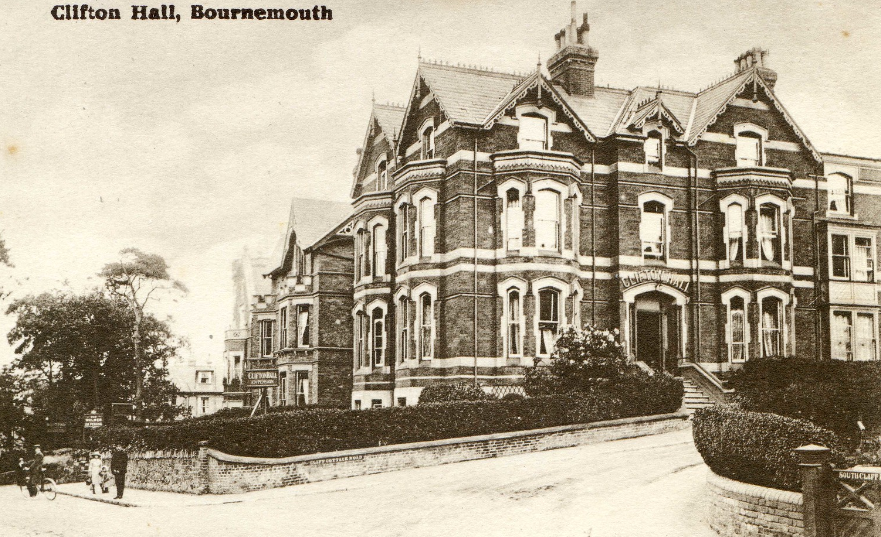


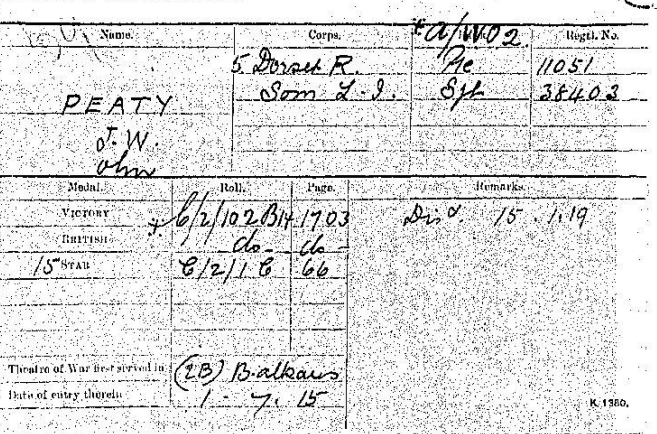

%20Peaty.jpg)

